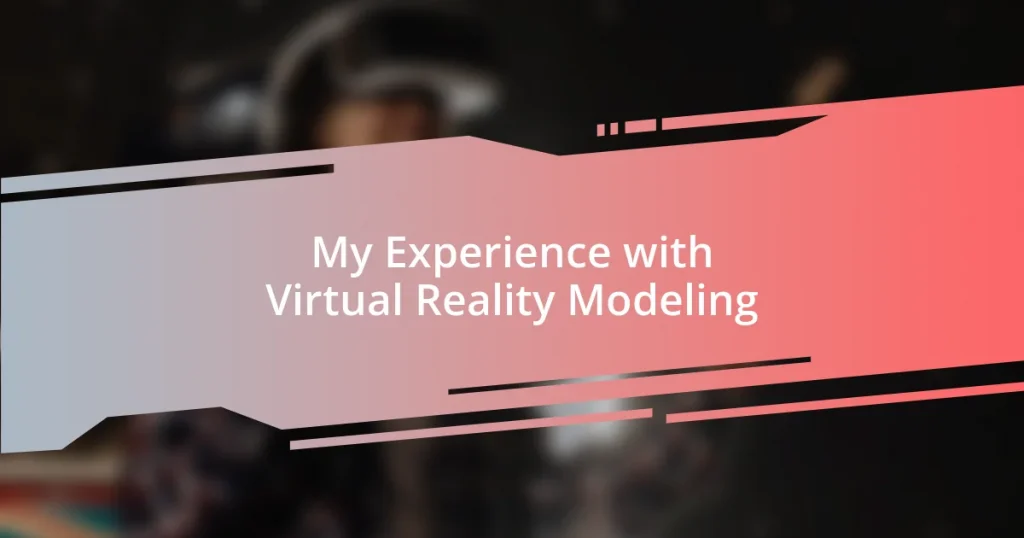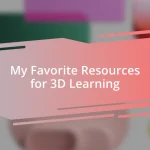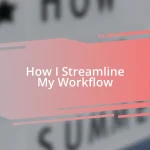Key takeaways:
- Virtual reality (VR) modeling offers immersive experiences that transform design and collaboration, enabling users to visualize concepts beyond traditional methods.
- Choosing the right tools, such as Unity and Oculus Medium, enhances the creative process and facilitates sharing and collaboration in the VR space.
- Incorporating techniques like 3D audio, motion tracking, and interactivity significantly enriches the user’s VR experience, making it more engaging and memorable.
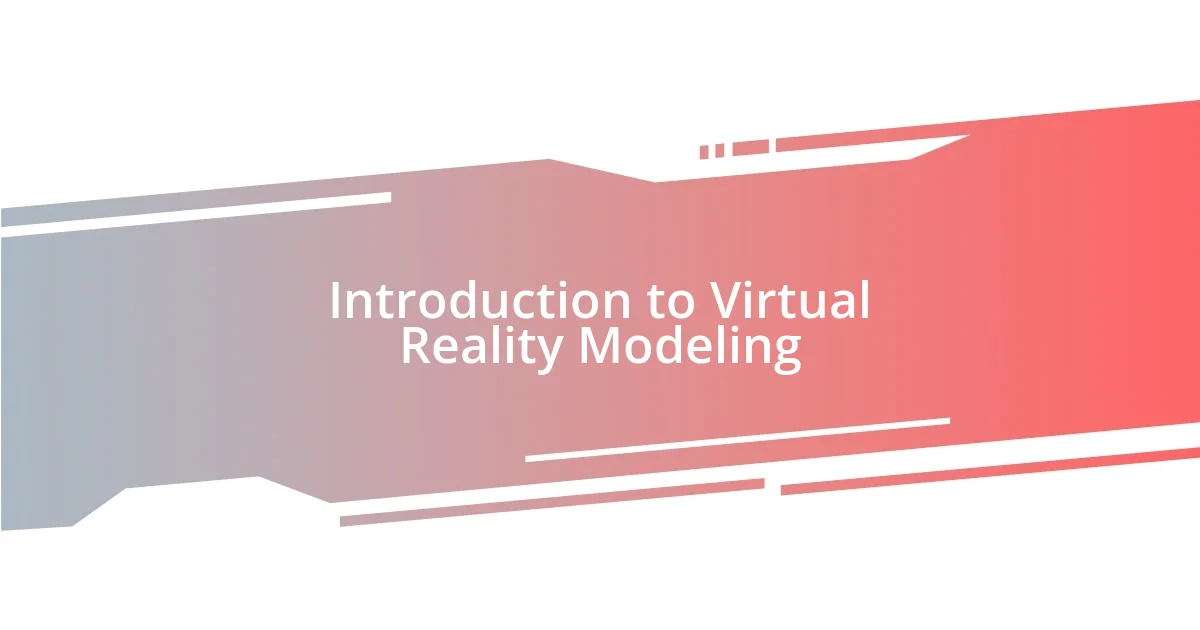
Introduction to Virtual Reality Modeling
Virtual reality modeling is a fascinating blend of technology and creativity, allowing users to create immersive environments that can be experienced in three dimensions. I remember the first time I slipped on a VR headset; it was a unique moment that transformed how I perceived digital spaces. Have you ever thought about how virtual reality can reshape our understanding of design and architecture?
As I delved deeper into VR modeling, I discovered how this technology offers endless possibilities for visualizing concepts that were once confined to the imagination. It’s like giving life to your ideas in a way that a simple sketch or blueprint never could. The emotions I felt as I walked through a virtually constructed space were exhilarating—like being the architect of my dream world.
One of the most intriguing aspects of VR modeling is its potential to foster collaboration. I recall a project where my team was scattered around the globe, but through a shared virtual space, we felt as if we were in the same room. Isn’t it amazing how technology can bridge distances and create authentic connections? This experience opened my eyes to the vast potential of VR beyond mere entertainment—it’s a tool that can transform industries.
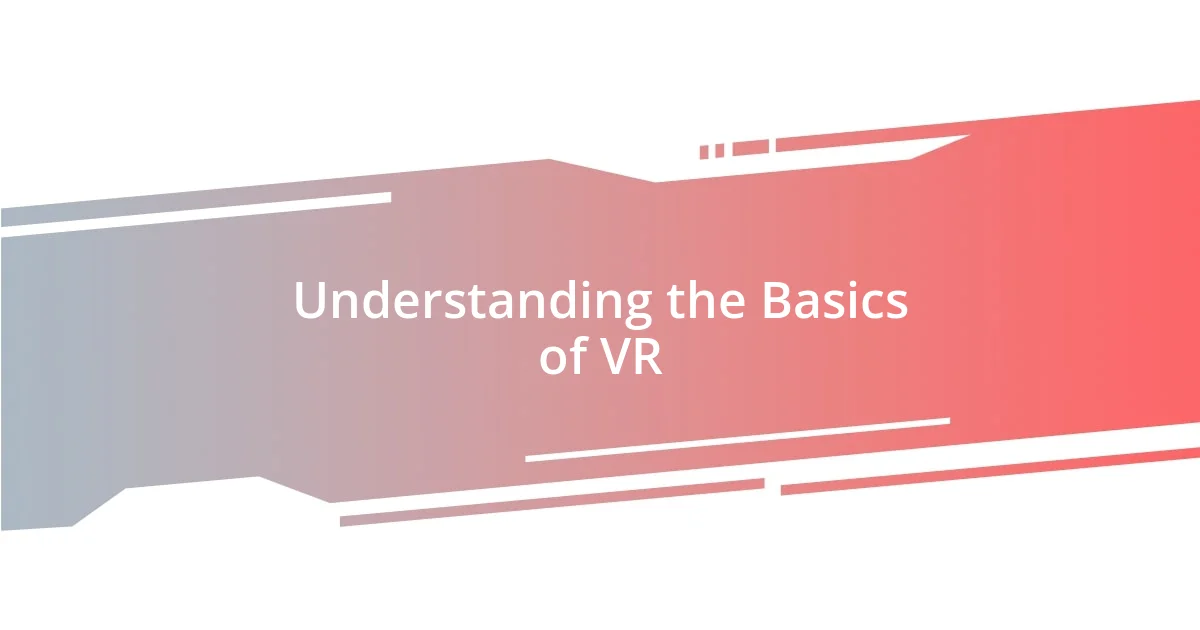
Understanding the Basics of VR
Virtual reality (VR) is essentially a simulated experience that immerses users in an interactive environment. Once, while testing a VR application, I was astonished as I navigated through a digital forest, feeling like I could reach out and touch the leaves. This experience opened my eyes to how VR can stimulate our senses and create a sense of presence that traditional media cannot.
Here are some fundamental aspects of VR:
- Immersion: The ability to feel completely enveloped by a virtual environment.
- Interaction: Users can engage with the digital world, influencing it through their actions.
- Three-dimensional environments: Unlike 2D screens, VR presents a spatial experience, enhancing realism.
Understanding these basics is essential for anyone eager to dive into VR modeling. The way I’ve experienced this technology firsthand makes it clear that it’s about more than just visuals—it’s an emotional journey that can evoke deep feelings and spark creativity.
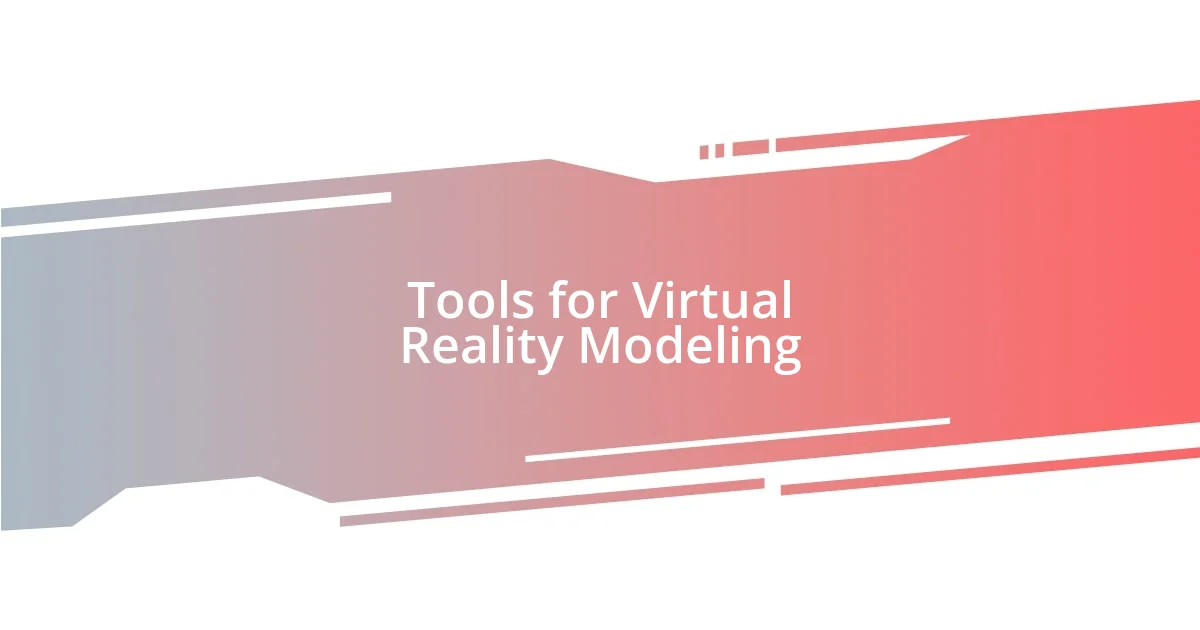
Tools for Virtual Reality Modeling
When selecting tools for virtual reality modeling, the variety can be overwhelming yet fascinating. I’ve experimented with several platforms, and each offers unique features. For instance, I particularly enjoyed using Unity for its flexibility and extensive asset library. It allowed me to customize environments to my heart’s content, while Unreal Engine impressed me with its stunning graphics and real-time rendering capabilities. Each choice represents a different approach to creativity.
While tools like Blender provide excellent 3D modeling options and are open-source, I found that platforms tailored for VR, such as Oculus Medium, facilitate a more intuitive experience. It feels as if I’m molding clay in a virtual studio rather than using complex software. The tactile nature of sculpting in VR was a game-changer for me, adding layers of depth I didn’t anticipate.
Moreover, using collaboration tools like Sketchfab enabled me to share my work easily with others, instantly bringing my creations into the social realm. I remember the thrill of presenting my project, watching my peers don headsets and explore my virtual world; it was a rewarding moment that highlighted the community aspect of this technology. It’s crucial to consider how each tool not only shapes the creation process but also how it impacts sharing and collaboration among users.
| Tool | Strengths |
|---|---|
| Unity | Flexible, extensive asset library, customizable environments |
| Unreal Engine | Stunning graphics, real-time rendering capabilities |
| Blender | Open-source, great for 3D modeling |
| Oculus Medium | Intuitive VR sculpting, tactile experience |
| Sketchfab | Easy sharing, social engagement |
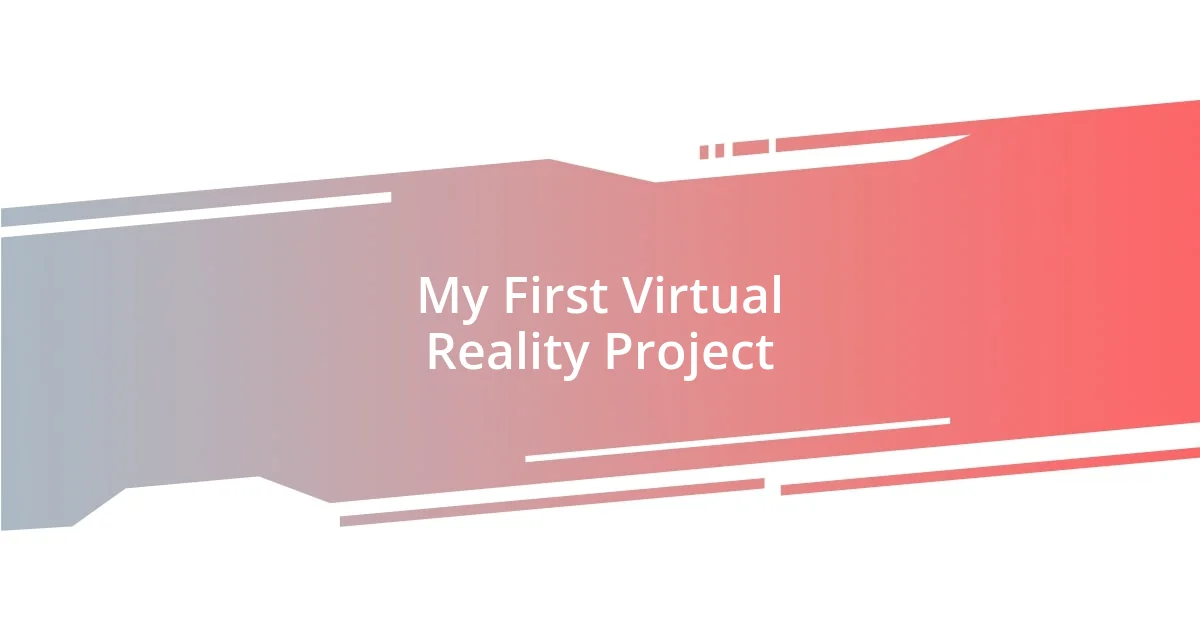
My First Virtual Reality Project
I vividly remember the excitement and nerves I felt when embarking on my first virtual reality project. Having previously only experienced VR as a consumer, stepping into the role of a creator was both thrilling and daunting. I chose to design a small art gallery showcasing my digital paintings, and as I meticulously crafted the space, I wondered—would this virtual world reflect my artistic vision as I hoped?
As I put on my headset for the first time to explore my creation, I was struck by how real it felt. Walking through the gallery, I found myself smiling at the details—the way the light danced on the walls made my artwork come alive. It was more than just an exhibit; it became an extension of my imagination. Moments like these are what make VR modeling special; it transcends traditional methods. Have you ever been so immersed in your work that you forgot you were in a room? That’s exactly how I felt.
Once I shared my project with friends, the joy of watching them interact with my gallery was unforgettable. Their laughter and genuine excitement made every ounce of effort feel worthwhile. I even overheard one friend say, “I can’t believe this is your first VR project!” Those words resonated deeply with me, echoing my journey of exploration and self-discovery through VR. This experience taught me that creating in virtual reality isn’t just about technology; it’s about connecting with others and expressing myself in ways I never thought possible.

Challenges Faced in VR Modeling
Navigating the intricacies of VR modeling hasn’t always been smooth sailing. On one occasion, I spent hours perfecting a virtual landscape, only to realize my computer’s graphics card was struggling to keep up, creating lag that pulled me out of the experience. Have you ever been so immersed in something only to have a technical issue pull you back to reality? It’s frustrating, and I learned then how crucial it is to ensure my hardware is up to the task before diving deep into creation.
Another challenge I faced was crafting an intuitive user interface within my VR environment. I wanted my users to feel comfortable exploring my virtual world, but sometimes, it felt like I was creating features that only made sense to me. It’s a constant balancing act: ensuring functionality while keeping the experience enjoyable. I remember one testing session where a friend struggled to navigate, and it struck me—design isn’t just about aesthetics; it’s about how people interact with the space. How do you make something feel natural in a medium that’s still relatively new?
Finally, there’s the emotional rollercoaster of critique. Sharing my work for the first time in a group setting was nerve-wracking. I anxiously waited for feedback, expecting praise but bracing for any criticism. One comment about my color choices hit hard, but it taught me resilience. Critique is a double-edged sword—it can sting, but it also pushes me to grow. Isn’t it fascinating how feedback, even when difficult to hear, can fuel our creative journeys? It’s all part of evolving as an artist in this exciting yet challenging field.
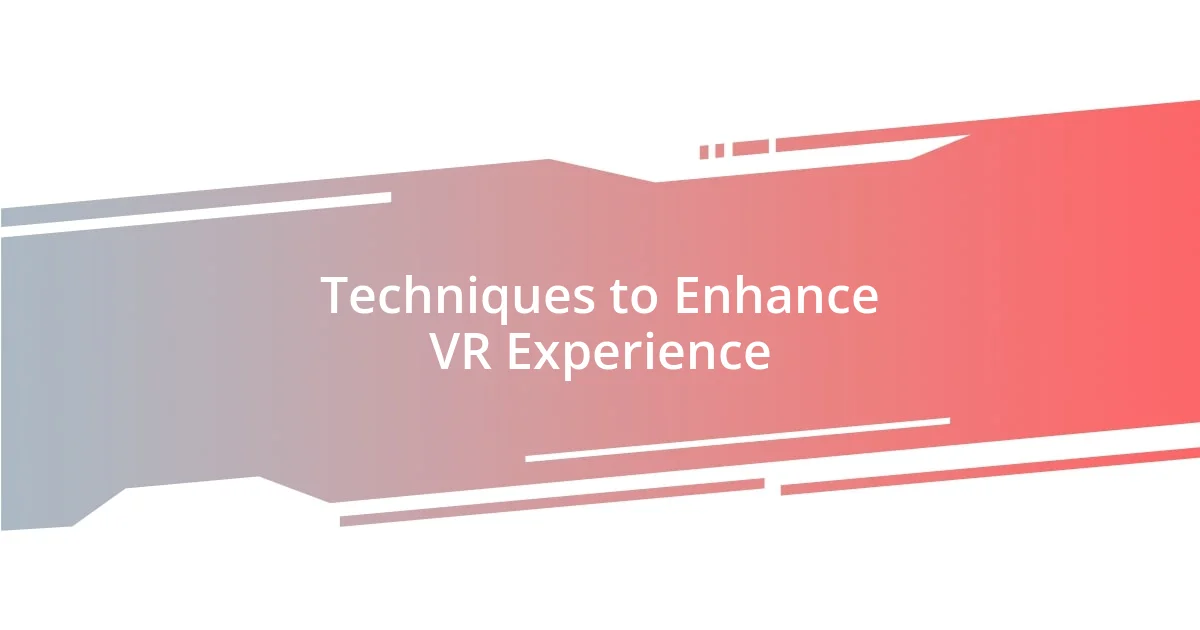
Techniques to Enhance VR Experience
To truly enhance your virtual reality experience, I found that integrating 3D audio is a game-changer. It’s like stepping into a movie where every sound feels spatial and alive. During one of my projects, I experimented with placing sounds in specific areas of my gallery—soft whispers in one corner and the rustling of leaves in another. The moment my friends donned their headsets, their eyes widened in wonder. They immersed themselves in an auditory landscape that complemented the visuals, proving just how powerful sound can be in shaping how we experience a VR environment.
Motion tracking is another technique I’ve come to appreciate deeply. Initially, I overlooked its impact, thinking visuals alone could deliver the message. However, once I incorporated motion tracking, the interaction took on a whole new dimension. I remember watching a friend reach out to touch a virtual painting, their hand mirroring real-life movements. It left me in awe; this subtle connection enhanced the realism immensely. Isn’t it fascinating how a small tweak can transform the immersion level? Engaging directly with the environment not only feels natural but also enriches the storytelling aspect of VR.
Lastly, adding the element of interactivity has proven essential in my projects. For instance, when I designed a virtual gallery, I included options for viewers to modify lighting or reposition pieces. It was delightful to see their eyes light up with curiosity as they explored. I realized that letting users have a say in their experience encourages a deeper connection to the art. How often do we feel more engaged when we have control over our environment? This approach has reminded me that VR isn’t just about observing; it’s about participating and discovering, which makes the entire experience profoundly personal and memorable.










